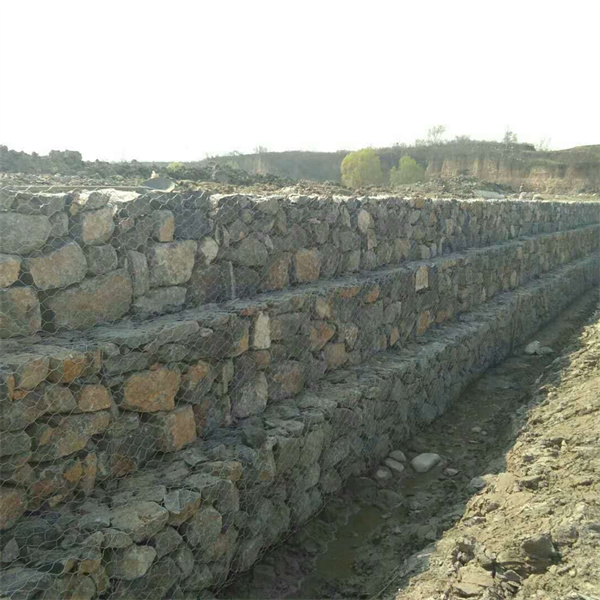Nov . 06, 2024 14:32 Back to list
Exploring the Benefits of Gabion Check Dams in China for Erosion Control
The Importance of Gabion Check Dams in China A Sustainable Solution for Erosion Control
In recent years, China has faced significant challenges related to soil erosion and water management, particularly in its mountainous and hilly regions. One innovative solution that has gained traction is the construction of gabion check dams. These structures offer a sustainable approach to controlling soil erosion, managing water flow, and improving local ecosystems.
What Are Gabion Check Dams?
Gabion check dams are barriers constructed from wire mesh filled with rocks, stones, or other natural materials. The design allows water to flow through while capturing sediment and reducing the speed of the water flow. This combination leads to positive effects on the surrounding environment by stabilizing the soil and preventing landslides.
These check dams vary in size and can be tailored to fit the specific needs of different terrains. They are particularly effective in areas where conventional damming methods would be impractical or too intrusive.
Addressing Soil Erosion
Soil erosion is a significant concern in many regions of China, especially in the Loess Plateau, where loose, crumbly soil is highly susceptible to washing away during rainfall. The lack of vegetation, coupled with steep slopes, exacerbates this issue. Gabion check dams serve as an effective barrier against these forces, controlling the rate of water runoff and allowing sediments to settle.
When constructed at strategic points along riverbanks or slopes, gabion check dams slow down water flow, enabling sediment to deposit behind the dam. Over time, this leads to the formation of new soil layers, fostering vegetation growth and restoring natural habitats.
Enhancing Water Management
china gabion check dam

Water management is critical in China, where the demand for agricultural irrigation and sources of drinking water often exceeds supply. Gabion check dams contribute to sustainable water management by creating small reservoirs that capture runoff during rain events and slowly release it during dry spells. This not only helps balance water supply but also significantly reduces the risk of flash flooding.
Moreover, these check dams improve the quality of water in downstream areas by filtering sediments and pollutants. This is crucial for both agricultural and drinking water sources, promoting healthier ecosystems and communities.
Environmental and Economic Benefits
The implementation of gabion check dams aligns with China’s broader sustainability goals. These structures are often made from locally available materials, which reduces the need for transportation and lowers construction costs. Additionally, they require minimal maintenance once constructed, making them an economically viable option for rural areas.
Communities benefit further from the improved agricultural conditions that result from reduced soil erosion and enhanced water availability. Increased crop yields can lead to better food security for local populations. Additionally, the recovery of natural landscapes can promote tourism and recreational opportunities, boosting local economies.
Challenges and Considerations
While gabion check dams offer numerous advantages, certain challenges must be addressed. The design and placement require careful planning to ensure they withstand extreme weather conditions and deliver long-term effectiveness. Local communities must also be engaged in the construction and maintenance processes to foster ownership and ensure the resilience of the structures against natural forces.
Conclusion
Gabion check dams represent a promising, sustainable solution to the pressing problems of soil erosion and water management in China. By capturing sediment, regulating water flow, and enhancing local ecosystems, these structures not only promote environmental stability but also provide economic benefits to communities. As China continues to grapple with the impacts of climate change and rapid urbanization, embracing innovative solutions like gabion check dams will be vital for ensuring a sustainable and prosperous future.
-
Visualizing Gabion 3D Integration in Urban Landscapes with Rendering
NewsJul.23,2025
-
The Design and Sustainability of Gabion Wire Mesh Panels
NewsJul.23,2025
-
The Acoustic Performance of Gabion Sound Barriers in Urban Environments
NewsJul.23,2025
-
Mastering the Installation of Galvanized Gabion Structures
NewsJul.23,2025
-
Gabion Boxes: Pioneering Sustainable Infrastructure Across the Globe
NewsJul.23,2025
-
Custom PVC Coated Gabion Boxes for Aesthetic Excellence
NewsJul.23,2025
-
Installation Tips for Gabion Wire Baskets in Erosion Control Projects
NewsJul.21,2025






